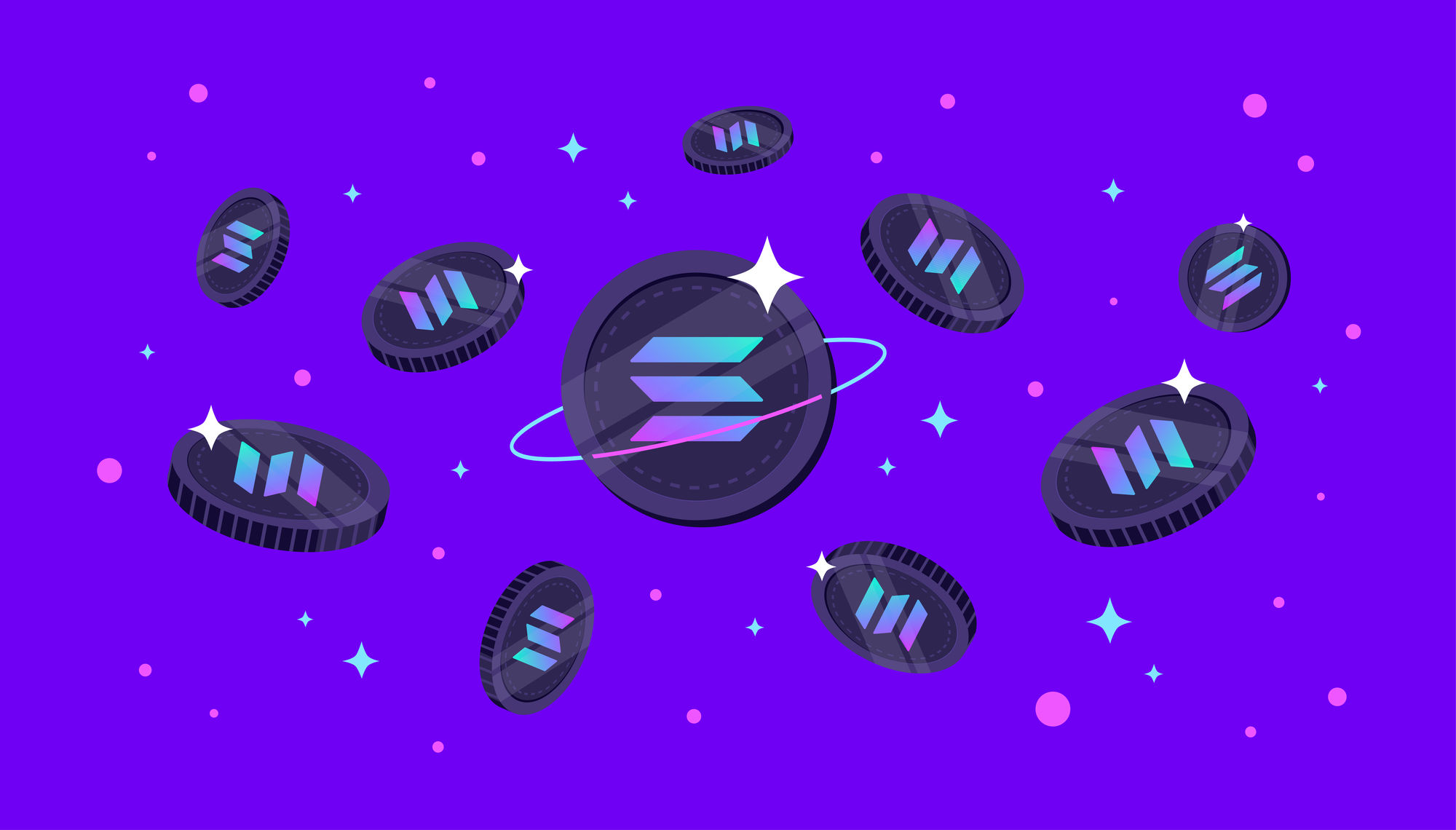Current price:
$
157.03
June 30th, 2025, 20:06:51 PM UTC+00:00
Circulating Supply
534.47M
Solana is one of the hottest prospects on the market today when we talk about a meaningful Ethereum competitor. It is its own blockchain that aims to do things better, faster, and cheaper than its competitors. The way the protocol operates is slightly different from some of its competitors as it implements a so-called proof-of-history model to save time and money.
Solana is the 7th largest cryptocurrency on the market today and has a current price of around $150 per token. Having started out in early 2021 at just $3.70 per token it managed to reach highs of well over $250. There is clearly a lot of potential in this project and its price reflects that; one curious thing about its valuation is that it hasn’t reacted very negatively to the system crashes that it has faced over the past six months. This is definitely something any potential buyer needs to keep their eye on and do their own due diligence.
This article will tell you everything you need to know about this protocol, where you can buy it, how you can buy it, and advise if now is the time to buy-in.
What Is Solana – Quick Overview
Name and ticker: Solana (SOL)
Date launched: April, 2019
Max supply: 314,151,611.92 | capped
Blockchain network: Solana blockchain
Creators: Anatoly Yakovenko
Use-cases: DeFI, NFT, Solana staking, Metaverse, smart contracts
Social media: Twitter | Reddit
What is Solana?
History
Solana was originally named after founder Anatoly Ykovenko’s favorite beach in California; here the developer worked for fortune 500 company Qualcomm as a software engineer, specializing in software, hardware, and wireless technologies for mobile phones. Anatoly was historically not a huge proponent of cryptocurrency – he didn’t see much to impress him in Bitcoin, and also he wasn’t so convinced with the Ethereum network.
He had then claimed to have solved the ‘puzzle’ of blockchain technology back in 2017 in a dream – essentially through the use of timestamps – a problem that makes on-chain transactions costly and inefficient.
This core issue, that still troubles blockchain developers and users today, is what created the space for Solana to occupy. It looks to solve basic problems in how a chain forms its blocks by the simple organization. Today, Solana is one of the most popular networks to build on for developers after Ethereum.
How It Works
The core difference between how Solana and Ethereum functions are described in Ykovenko’s concept of Proof-Of-History. PoH integrates time as an element of its chain organization – something neither Bitcoin nor Ethereum does. The lack of this time component creates critical inefficiencies in the way that chains are organized.
A simple anecdote to help explain this can be found in how radio transmissions used to work. Originally, they did not integrate an element of time, meaning that two towers could transmit the same signal at the same time; when they met, they would create white noise. We can think of blockchain technology in a similar spot. Bitcoin and Ethereum have miners simultaneously creating multiple chains of information, and currently, the method for choosing the correct chain is simply the first one to finish wins. This is inefficient and costly for both time and money. Anatoly solves this by timestamping the Solana blockchain, thereby completely avoiding this problem altogether
One interesting challenge Solana had when developing this concept was how to create a decentralized clock that has no timekeeper; additionally, is there a circumstance where two blocks could have the same timestamp. To solve this, Anatoly slightly adjusted Bitcoin’s famous SHA256 mining algorithm to act as a clock.
When this timestamping system was paired with an improved Proof-Of-Stake system, it unlocked unparalleled power of transaction size and speed – something no one else was even close to competing with, let alone on the base layer protocol.
The Purpose
Solana is often dubbed the Ethereum killer. Now, you may notice there are many of these so-called ETH killers, but Solana is unique in the way its purpose is to perform best where Ethereum struggles.
It is a layer 1 protocol and its own blockchain that offers developers a place to build with fractional transaction speeds and costs. In fact, its numbers are quite ridiculous when compared with competitors.
How to Buy Solana
To buy any token you will need an interface. There are a host of different options for you, but most will require you to verify your identity and create an account with some sort of platform. Here we have laid out your options.
You can buy SOL using any of the following platforms:
Brokerages:
- SOL is available on a good range of crypto brokerages compared with other cryptocurrencies – this does include eToro and Trading 212. Many brokerages are regulated and support fiat-to-crypto payments.
Exchanges:
- You can also buy Solana on centralized cryptocurrency exchanges. Exchanges differ from brokers because they provide direct access to the cryptocurrency market. Through an exchange, you can buy Solana with crypto-to-crypto payments. This is the best option for investors who want to swap existing cryptocurrencies for SOL.
Decentralized Exchange (DEX):
P2P:
How to Sell Solana
You can sell your SOL using any of the methods we have shown above under How To Buy Solana. Again, most platforms will require you to verify your identity and create an account; additionally, you will need to own the token directly or via a derivative.
With some platforms, like an exchange, you are able to transfer any holding of SOL you may already have to that platform and then sell it there. Whereas with something like eToro you will first need to buy SOL on the platform, and then also sell it there.
We advise that you first check the fees you may incur when transferring crypto assets from platform to platform as it can be quite costly.
Alternative Ways to Invest in Solana
Due to Solana’s popularity, we are now seeing this token becoming available for purchase in the form of more traditional financial products like derivatives. The crypto space is now beginning to merge with these traditional products and we are seeing a wide range of the most popular coins expanding how investors can own their assets. Here is a breakdown of some of the alternative ways you can invest in Solana.
Contracts For Difference
Exchange Traded Fund
An ETF is best thought of as a collection of different assets relating to a specific product. For example, an ETF could include stocks, commodities, bonds, or a mixture of them. It is an alternative type of security that tracks the asset in a different way than just buying it outright.
Solana now has its own ETF called the Galaxy Solana Funds, of Galaxy Digital Holdings LTD. There is also an ETP (Exchange Traded Product) called 21shares Solana ETP.
Trusts
Is It Safe to Invest in Solana Right Now?
Crypto markets are extremely volatile and carry huge risks, so we advise you to always be careful with these assets and your own due diligence.
Solana currently sits as the 5th largest cryptocurrency by market cap. While this means there is a lower chance of huge gains than some other Altcoins, it arguably represents one of the more secure options – at least in terms of the Alt market.
Solana experienced some really meaningful network issues at the end of 2021, with its worst moment coming in December 2021 in the form of a complete network crash. Decentralized networks should not really do this – a complete crash means every user experiences the same bug. While this is a very serious event, its token SOL barely reacted. We can infer from this that there is a lot of confidence in Solana – and this is true institutionally as you see the growth of funds and indexes related to the Solana network.
Since 2021, SOL has gone from strength to strength. This has been propelled by the significant demand for Solana meme coins – a trend that took over the internet at the end of 2023. These tokens helped the Solana network to overtake competitors including Cardano, and Ripple.
SOL is definitely a token to keep your eye on and presents a valid competitor to the current king of blockchain networks for developers: Ethereum.
Read More About Blockchain Coins









